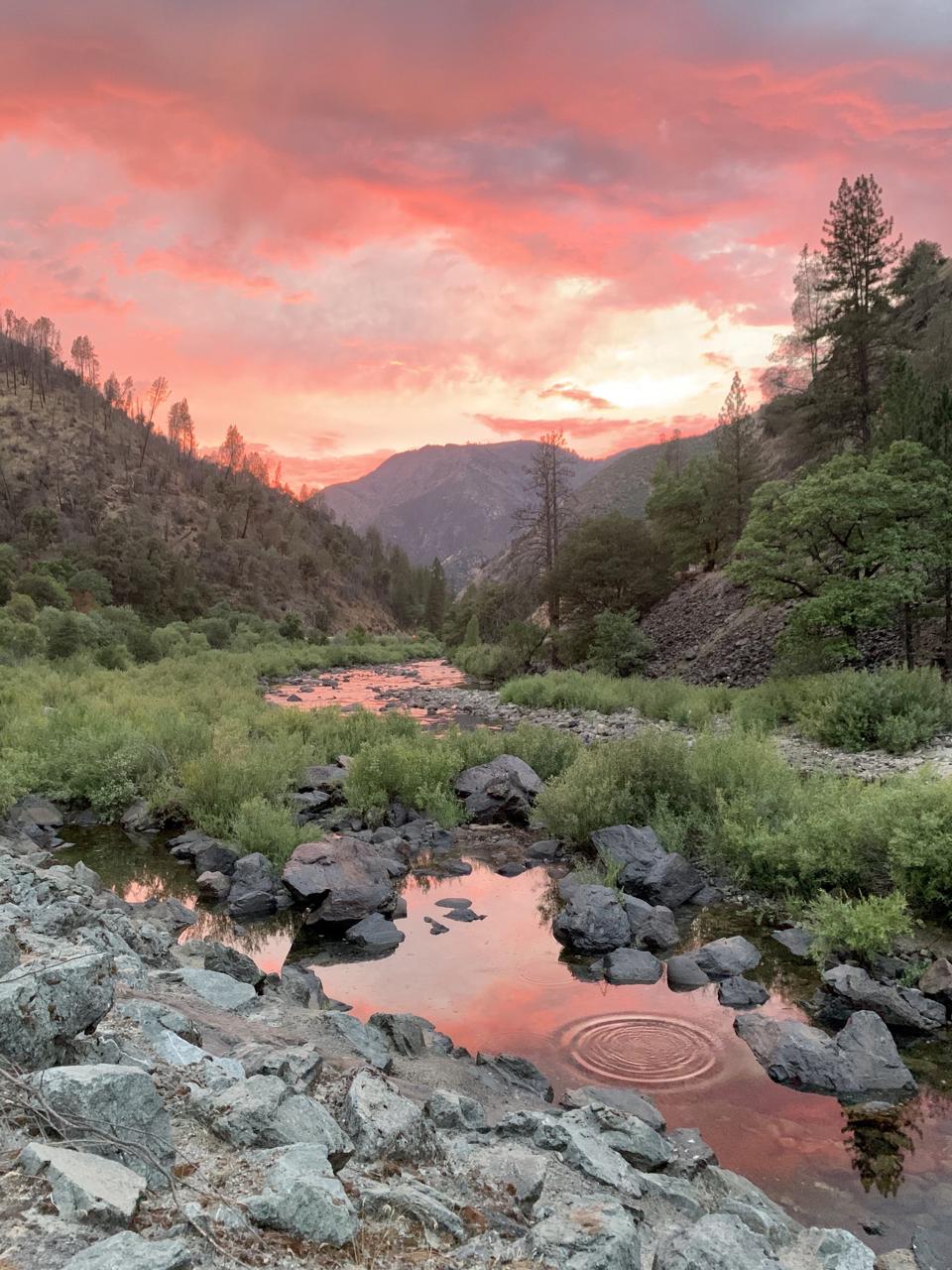
Yosemite National Park is stunning at sunset.
Wendy Altschuler
As summer winds to a close and fall begins, you might be wondering how best to relish the warmer weather and enjoy the informal final weekend of the season. For many, this might be the last hurrah before buckling down for school or work obligations. Or, you might be lucky, with more freedom and time on your hands, which will often afford you better travel deals as well as fewer tourists to contend with during the shoulder season.
Of course, you’ll want to follow social distancing guidelines by staying at least six feet apart and wearing a mask to protect yourself and others while away from home. Practice good hygiene and wash your hands frequently, or use hand sanitizer, and don’t travel if you are exhibiting signs of illness or if you’ve been exposed to someone with COVID-19, per Centers for Disease Control and Prevention guidelines. Spending time outside, away from large gatherings of people, is a safe bet. Keep reading for suggestions and tips on where to go out west, what to do when you get there, and how to enjoy the concluding days of summer as well as the start of fall.
California’s Central Coast
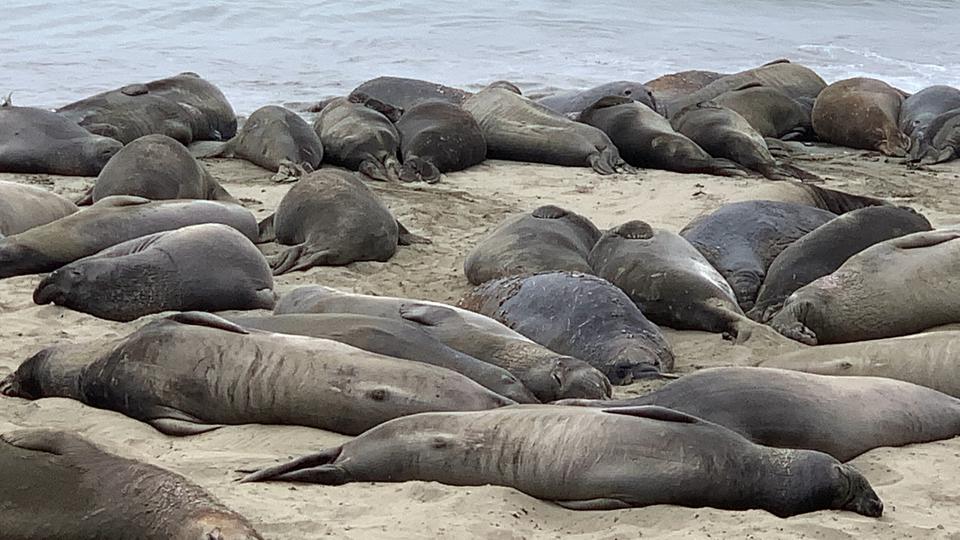
The Elephant Seal Rookery is a highlight along California’s Highway 1 Discovery Route.
Wendy Altschuler
Recommended For You
Good-time vibes are the elixir along California’s Highway 1 Discovery Route, where you’ll find a plethora of outdoor activities. Explore thirteen state parks; see elephant seals jostle in the water at the rookery; taste wines from family-owned vineyards; and spend a day at the beach, surfing, body boarding, or playing in the sand. For an extraordinary custom experience, enlist the guiding services of Tula Yoga for a Meditative Yoga Walking and Nature Bath. The weather is at its best July—October, so there’s still plenty of time to visit.
The new Coastal Discovery Trail is ideal for socially distant nature and wildlife experiences as well as stewardship travel opportunities on over 100 miles of beaches, preserves, bluffs and parks. Learn where the experts recommend visiting for whale watching and sea otter observing, find out where to go with your dog, and learn about the best hikes for your interests.
Pro Tip: For outdoor dining, takeout, and desserts, check out Harmony Valley Creamery in the tiny town of Harmony, Mersea’s Seafood Restaurant in Avila Beach, Linn’s Restaurant in Cambria, Ruddell’s Smokehouse in Cayucos, Brown Butter Cookie Company in Cayucos, and Noi & Doi’s 2nd Street Café in Los Osos.
Columbia River Gorge
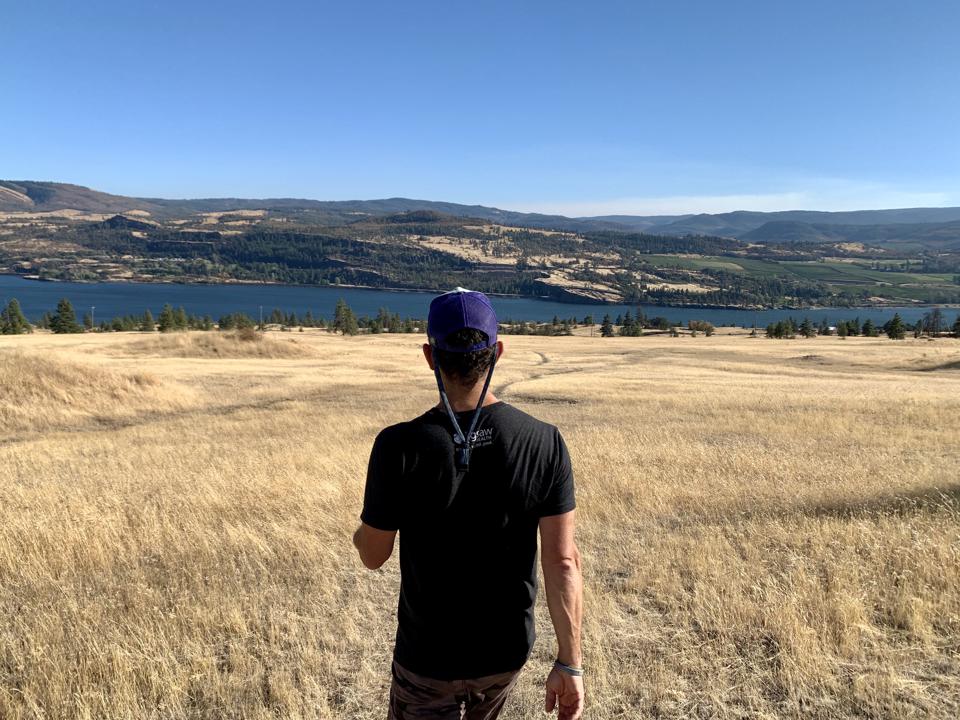
The Columbia River Gorge is home to stunning vistas, outdoor adventures, and the oh-so-cool The … [+] Society Hotel, Bingen.
Wendy Altschuler
Winding through the Cascade Mountains, creating a moving border between Washington state and Oregon, the Columbia River is where dense and cool marine air from the west mixes with hot and dry air from the east, creating a wind tunnel of sorts, perfect for kiteboarding and windsurfing. Mt. Hood (11,245 feet)—the second most climbed glaciated mountain in the world after Japan’s Mt. Fuji, Mt. Adams (12,276 feet), and Mt. St. Helens (8,358 feet) are major attractions when visiting the Columbia River Gorge scenic area. The western Gorge is verdant and full of old growth trees and waterfalls while the eastern Gorge is a desert environment with craggy bluffs, wildflowers, and less than 15 inches of rainfall per year. Many hiking trails, of various lengths and level of difficulty, exist in the Gorge areas of Washington, Oregon, Mt. Hood territory, and Waterfall Alley. A great resource to utilize is Friends of the Columbia Gorge.
Communities worth exploring are Hood River, where you’ll find oodles of restaurants, pubs, and shops as well as a dynamic waterfront; White Salmon, the “It” destination for whitewater rafting—Wet Planet will take you down class III and IV rapids as well as the 12-foot Husum Falls, one of the tallest commercially raftable waterfalls in the country; and Bingen, an enchanting small town that serves as the gateway to hiking, horseback riding, mountain biking, and water sport adventures.
Experience the serenity of the Columbia River Gorge via a scenic drive, along the river, where you can cross the Hood River Bridge, a truss bridge built in 1938. You can also cross the Dalles Bridge, Biggs Bridge, and Bridge of the Gods (Do you remember Cheryl Strayed’s Wild: From Lost to Found on the Pacific Crest Trail?).
For a custom tour, consider a wine tour by bicycle with MountNBarrel, where you’ll ride past pear and apple orchards, see horse and alpaca ranches, and sip ciders or wines from places like Wy’East Vineyards, Mt. Hood Winery, and The Gorge White House. The predominant soils in this area are volcanic, lahar, loess, silt and sand, depending on the elevation, which ranges from sea level to 2,000 feet, and there are over 40 wineries and 90 vineyards in the Gorge region.
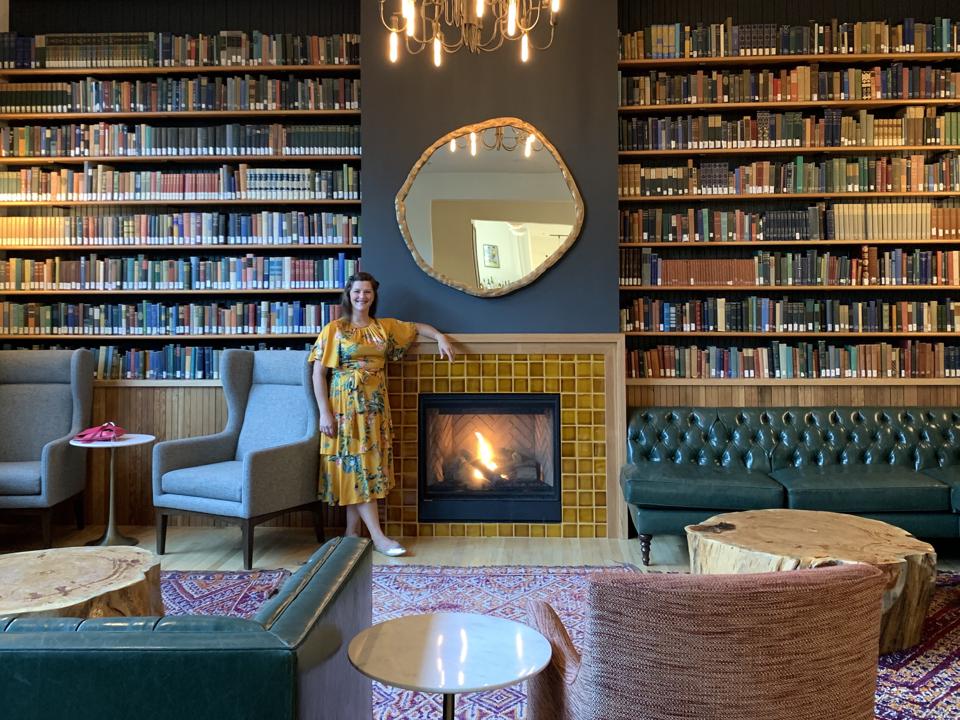
A tree stump, sourced from the Eagle Creek Fire, sits in the lounge near a fireplace flanked with … [+] books acquired from a former college. Titles date circa late 20’s—late 30’s.
Wendy Altschuler
Pro Tip: Originally the site of the Bingen School, which operated from 1901—1984, followed by a windsurfing hostel from 1984—2017, The Society Hotel, Bingen—sister property to The Society Hotel, Portland, is now the new hip reimagined property, beautifying the space since 2019.
The classrooms were converted into capsule-style bunkrooms and private guest rooms. Separately, the cabins, each with their own picnic table and hammock under a cantilevered roof, have been freshly built on the school’s former baseball field. The large windows in the private rooms and cabins let the light in and every inch of space is well thought out and designed to be minimal, with everything that you need and nothing that you don’t.
Stay here and you’ll be rewarded with creative outdoor social spaces surrounded by wildflowers and grasses, a below-ground sanctuary that is reminiscent of an upside down lotus flower, beautiful wood-forward design with a Scandinavian aesthetic throughout the accommodations and spa, and a wall of books in the lounge, rescued from Marylhurst College, with library stamps and inscriptions dating circa 1920’s. The Society Hotel is a gem in the gorge.
Yosemite National Park
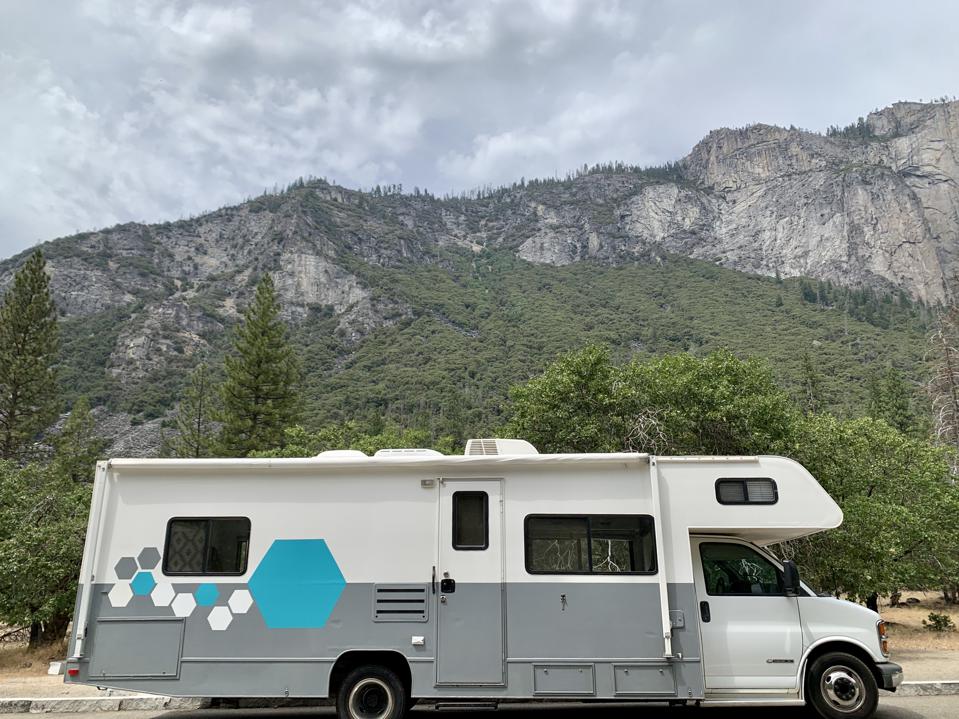
Outdoosry, the platform that connects renters with RV owners, can facilitate a rental like this one … [+] for a visit in Yosemite National Park.
Wendy Altschuler
Yosemite National Park, plus nearby Kings and Sequoia National Parks for that matter, is one of the most stunning parks, with towering waterfalls, gargantuan sequoias, and meadows that reach to the base of granite walls. New guidelines require a permit for a visit to the park, but you’ll find that the thinned out crowds make for a more enjoyable experience, especially if you arrive outside of peak hours (before 9 a.m. and after 5 p.m.). Food trucks are available for outdoor dining and many of the popular trails are open. Renting bicycles is a great way to get around Yosemite Valley. Visit Mariposa Grove, Tuolumne Meadows, and Glacier Point.
One of the most fun and memorable ways to explore the park, and the surrounding area, is via recreational vehicle. You’ll have your home with you, which means that you can take breaks for lunch or napping and have a place to put all of your belongings. An RV rental makes traveling with a family stress-free as you’ll be able to go at everyone’s pace and when you’re ready to park the vehicle for the night, you can simply pull in, plug in, and tuck in for the night. The best place to rent an RV, due to the variety of makes and models and the accessible customer service and support, is Outdoorsy, a platform that connects renters with owners. Rest your head in a cute-as-a-button vintage Airstream, fifth wheeler, Class A, B, or C, trailer, or motorhome.
Pro Tip: The optimal place to park an RV is at Curry Village or the Day Use parking area, which is near the Village Store. Be sure to check a map before arriving.




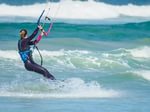
Recent Comments